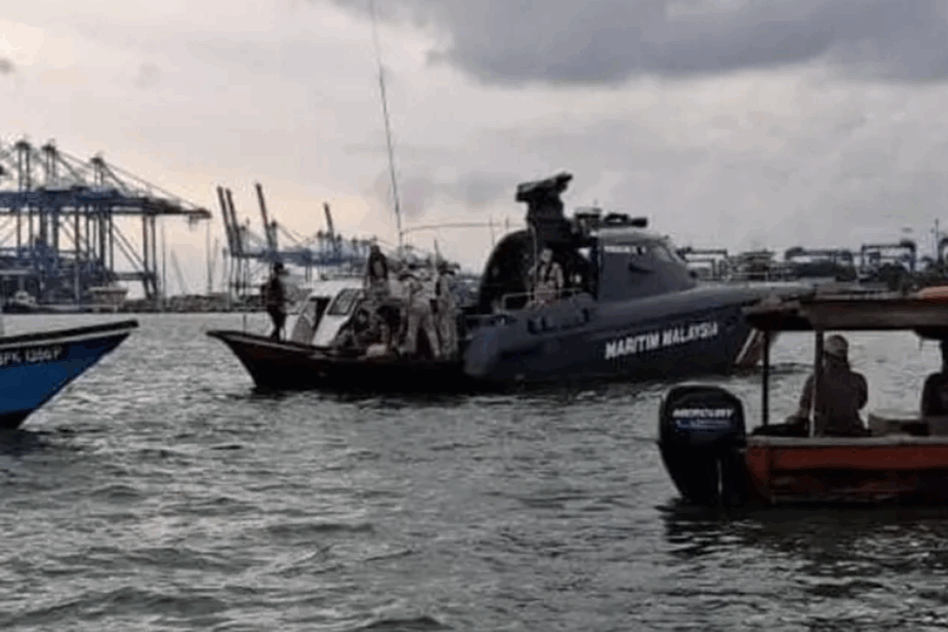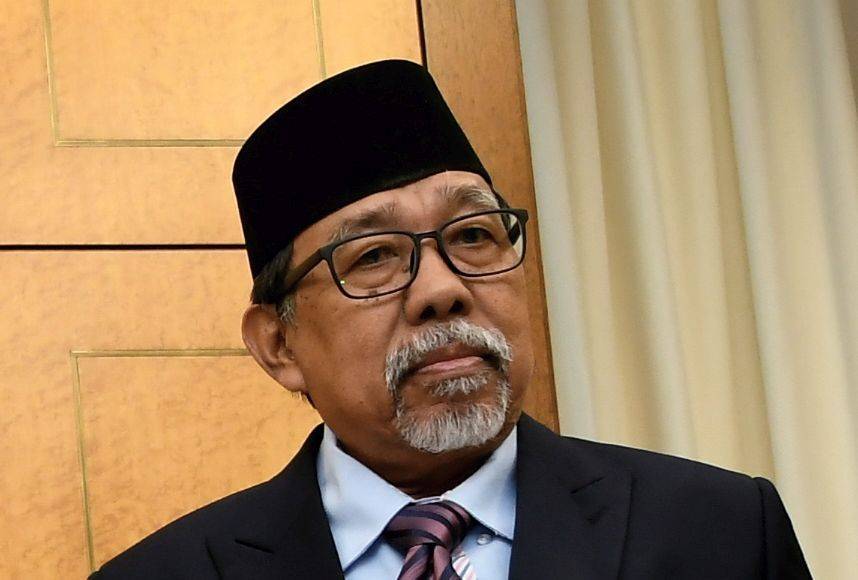By Capt Kamil Abu Bakar
IN the aviation history, there had been several accidents involving pilots with unstable mind. I do not want to mention the cases as it may raise unnecessary apprehension.
In Malaysian aviation history, we had a few. Here are some of the cases and how we handled them.
The first happened many years ago when l was young, and still had a lot of hair! And unfortunately, l had to handle the situation.
I was then the fleet manager of our Airbus A 300 B4 aircraft.
One day, when we were having our daily morning meeting, l got a call from our operations control to inform that one of our flight to Singapore, was returning back to base.
I questioned why and was told that it was due to bad weather in Singapore. Fair enough. I went back to continue with the meeting.
Some 20 minutes later, operations control again called me to inform that the First Officer of that flight was stepping down. He was reported to have fallen ill.
Again, I asked what happened and was told they were in the dark too, Surprisingly, I was also informed that the Captain of that flight too had walked away from the aircraft.
My thought was to have that flight rescued. Most of the time, the flight would be full with more than 240 passengers.
I was in the midst of making arrangement to get replacement crew to take over the flight, and there stood the First Officer at the office entrance, with his face all gone pale!
Being quick witted, I immediately asked the First Officer: “Can you fly with me?”
I was lucky. As he was mumbling something in his reply, a pilot, a Captain in full uniform, walked into the office.
I turned to that pilot and immediately asked for his uniform. He barked at me asking what was he supposed to wear and I told him, use mine (I was wearing office attire then).
I don’t know how we managed it but l looked like Charlie Chaplin in his clothes… baggy shirt, baggy trousers with sim hanging three inches above my ankles, exposing my mismatched purple socks.
But what was important was the four gold bars on the shoulder. That’s what the passengers wanted to see.
Without getting the affirmation from the First Officer, l said, “Let’s go”, but not before telling my secretary to call operations control, to keep the passengers of the flight on board, for engineering to refuel the aircraft to the same amount earlier, to have my name on the list and for the traffic to bring another load sheet for me to sign.
When we arrived at the aircraft, the flight engineer was still there and in no time, the flight was off again to Singapore, albeit one-hour delay to the original schedule.
I let the First Officer to fly the aircraft. It was better for me to monitor him, not knowing his state of mind after the “drama”.
Nothing was said or talked during the flight. It was very quiet, with only the exchanges of check list response and the standard callouts.
I apologised to the passengers for the delay. I could not tell them the reason, for l too at that time, did not know what actually happened.
After I flew the return leg and the engines shut down, I signed the aircraft’s log book and asked for the First Officer to meet me in the office.
And I enquired what happened during the flight and the First Officer responded by saying the Captain was grumpy throughout the flight. He was upset to see the Yellow INOP stickers (inoperational) on the overhead panel.
(If there is a minor system defect which does not affect the safe operations of the aircraft, it is the maintenance practice and within the Airworthiness requirement, if spare is not available or due to time constraint, for the engineering personnel to defer the defect and to “mark” that with that Yellow INOP sticker.)
Soon after departure, the Captain was said to have pulled out the stickers and chewed them!
When the flight was over Batu Pahat, after the First Officer had gotten the actual weather report in Singapore, that it was raining with not so good visibility…the Captain snapped!
He abruptly turned the aircraft around and charged back to Kuala Lumpur in a state of anger.
When asked, the flight engineer said, he was prepared to wrestle him from the controls if he, the Captain were to do a dangerous manoeuvre.
Fortunately, the aircraft landed safely with no untoward incident.
In the meantime, we received information, that the Captain, after abandoning the aircraft, was seen walking up and down the Subang airport road.
We arranged for an inquiry the following day. But he failed to turn up.
Assessing all the information available before us, that he was not behaving normally, the Board decided to terminate his services, which he did not contest.
Later, we learned that the possible reason why he became mentally unstable was because of marital problems.
Regardless, we too learned that after his dismissal, he went off to London to pursue a law degree.
After two and half years, the former flight Captain came back and met me.
He came to my office and said, “Kamil, l am now a lawyer. I’m going to sue you for sacking me.”
I said, ” Oh, come on Joe (not his name), l was just doing my work. You should thank me for rescuing your flight. Why you gave me problem?”
We had a good laugh about it. We could still joke with somebody who had gone bonkers! I was glad that he had decided to become a lawyer instead of continuing to fly an aircraft.
After the problem, we started advising pilots that if they have any personal problem, please do not fly and if necessary, come talk to us.
We also told the crew to keep a look out on one another and bring to the management’s attention if they were to encounter any of their colleagues who appeared “not behaving normally”.
We too briefed the ground staff to monitor pilots who:
- Is seen to be perpetually smiling all the time…for no apparent reason.
- Is seen talking to himself.
- Is seen to be extremely quiet, keeping things to himself.
- Is seen to be doing things a normal person would not do.
- Is seen to be depressed.
- Is seen to be drinking heavily.
- Is seen to be borrowing money from people.
For a long while, everything appeared to be okay till some years later when my waist had increased to 34 inches and l started getting grey hairs, and on one of my station visits to Kuching, as a director, one of the pilots was kind enough to give me a comic book.
It was not the ordinary comic book like Beano or Dandy. Not even like of Lat’s cartoons…which are intellectual in nature.
It was a scrap book, an exercise book of his cartoon drawings and pasting of cuttings of cartoon characters …. like the one done by a Standard Three schoolboy.
And this came from of a 33-year-old pilot. We soon had his services terminated.
He, by the way, was not from our cadet pilot recruitment scheme.
The third case involved a brilliant chap who was known to be doing some weird things at times.
I too would do crazy things sometimes. But l knew exactly what l was doing and the legal implications associated with it.
This guy, one morning he took off for Langkawi without the loadsheet.
(The loeadsheet is a legal document stating amongst other things, the number of passengers on board, their seating position, the cargo distribution, the amount of fuel on board, the centre of gravity of the aircraft and the eventual total weight of the aircraft, for the pilots to eventually calculate the aircraft’s take off speed and later the landing speed.)
It is imperative for the Commander to sign it, have a copy with him and another retained on the ground. He took off without that. How he got the takeoff speeds, no one knew!
By our reporting system, the Licensing Authority, Department of Civil Aviation (DCA), got to know about it and had his Airline Transport Pilot Licence (ATPL), withdrawn. Without it, he could not fly as a Captain.
That being the case, what the company did was to put him to fly as a co-pilot, on the right-hand seat, which is a sort off demotion without a salary loss.
That is the good thing about being a pilot in Malaysia Airlines. Because of strong Malaysia Airlines’ Pilot Association (MAPA) support, despite being demoted for whatever reason, pilots would get to retain their last drawn salary.
But the guy was not happy with the arrangement because he could not wear the four golden bars.
After a few months, he sued the company, for what he perceived as “Constructive Dismissal.”
The case went for hearing at the Industrial Court. After the company’s witness testified, explaining to the court the significance of the loadsheet and that his ineligibility to remain as a Captain was because his licence had been withdrawn by the Licencing Authority, the Court president before making his judgement, asked the pilot one vital question.
“Did the company sack you?”
He answered, “No, I sacked myself!”. The case was dismissed, and so was he from the airline.
The last case was very sad. One Captain was seen to be mentally stressed. He showed depression. He was pulled out from flying and given psychiatric treatment.
Of course, his “grounding” was with the knowledge of the Licensing Authority.
In the meantime, whilst he was undergoing the treatment, he was given a ground job.
After sometime, the DCA medical board came up with the decision that he could not fly anymore and withdrew his licence.
The company had no option but to terminate his services because he was employed as a pilot on grounds he had the licence to fly.
He was not happy with the medical board’s decision that on his own accord, he went to London to get a second opinion.
Unfortunately, the evening he arrived at the hotel, he went berserk!
The hotel staff had to hold him down and he was subsequently sent to a psychiatric hospital.
Hearing that, l took the earliest flight to bring him back. I brought along a fellow pilot, just in case he goes berserk again in the aircraft.
I was then the director and l had to bring my “son” back.
The sight of him at the mental ward was very depressing. It was pitiful to see the condition he was in.
Those who are old enough to watch the movie “One Who Flew Over the Cuckoo’s Nest” starring Jack Nicholson should know what l mean.
What they do, to keep these mentally deranged individuals under control so as not to go berserk, they are sedated. They become docile and harmless.
After giving the assurance to the hospital authority that we would be responsible for his wellbeing, he was released. We flew back that night.
When we arrived in Subang, l surrendered him to his father, a retired senior police officer.
In conclusion, pilots are also human beings. Like any of us, they can also suffer mental health issues due to many factors.
The moment we come across a pilot not behaving “normally”, they would be taken off flying duties immediately.
Of course, there is also the six month once medical checkups the pilots have to undergo for their licence renewal.
Though the check is on the physical and biological aspects, when facing the doctor, the latter would be able to also tell the state of the pilot’s mind.
Anyway, from reliable sources, the Captain of flight MH370, was certified normal during his medical check done a week before the aircraft went missing.
Cases of the aircraft being flown by mentally deranged pilots are very rare. We cannot avoid that, unless aircraft are to be flown by robots.
But would we then fly with the cockpit being occupied by robots? Besides, robots cannot make public address if the aircraft has problem with its toilets!
Nevertheless, please take it from me, flying is still the safest mean of public transport. – Dec 26, 2020
Capt Kamil Abu Bakar was a former Malaysia Airlines Director of Flight Operations, chief pilot, Flight Safety & Security director and member of the International Advisory Committee of Flight Safety Foundation.
The views expressed are solely of the author and do not necessarily reflect those of Focus Malaysia.









